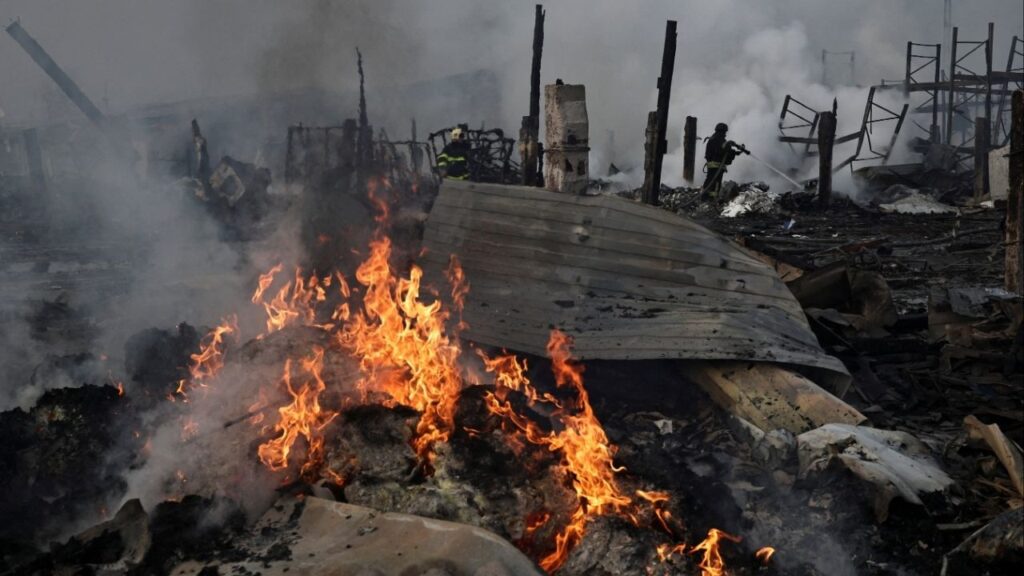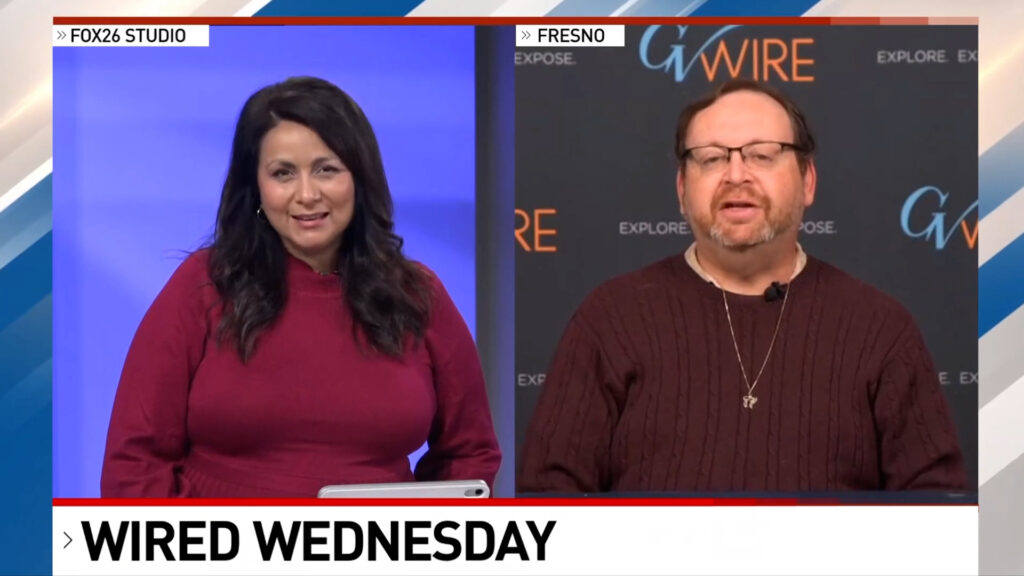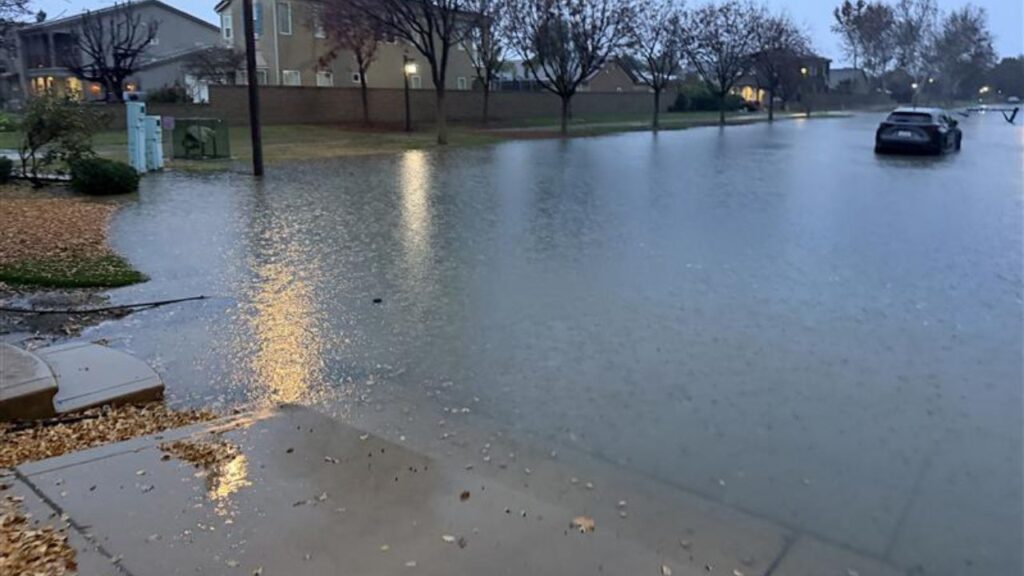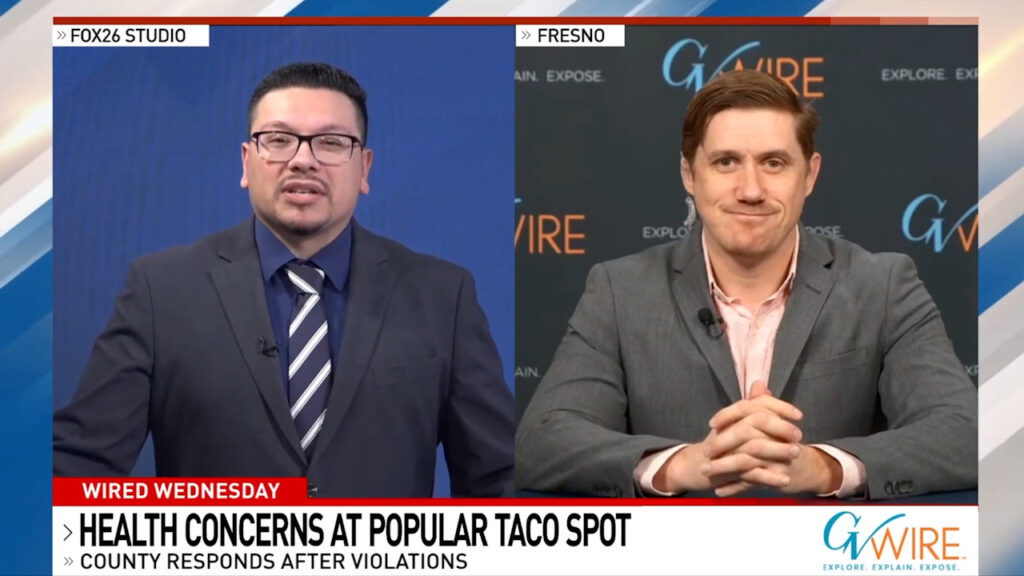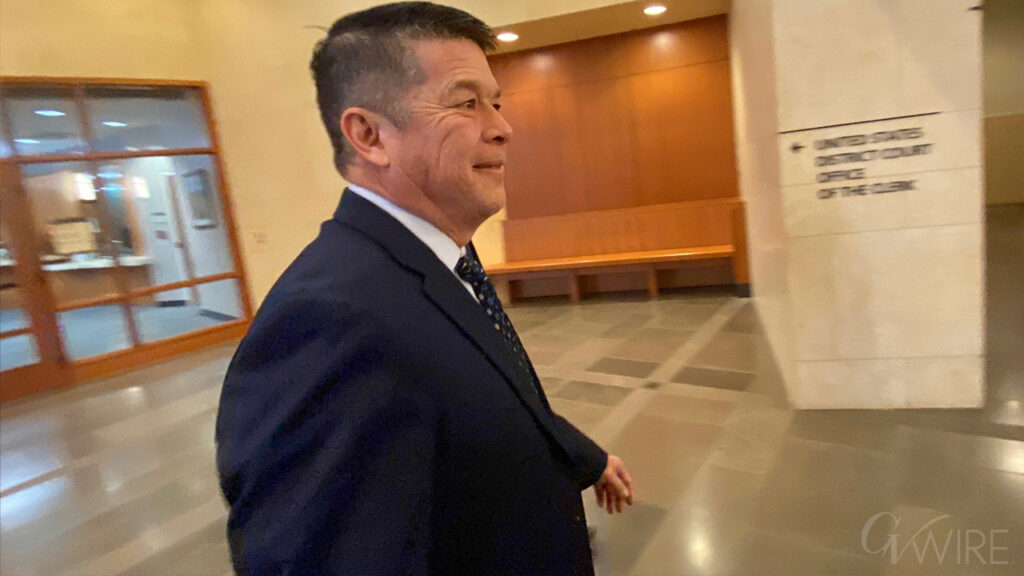Drinking water contamination is a chronic, insidious threat in California’s rural communities. Some San Joaquin Valley communities have been waiting for clean water for years. (CalMatters/Larry Valenzuela)

- State regulators said in July that nearly a million more Californians now have safe drinking water than five years ago.
- However, 735,000 people are still served by systems that fail to meet state requirements for safe and reliable drinking water.
- Small communities, like Allensworth in Tulare County and San Lucas on the Central Coast, have awaited clean water for years.
Share
|
Getting your Trinity Audio player ready...
|
In a major milestone, state regulators announced in July that nearly a million more Californians now have safe drinking water than five years ago.

Rachel Becker
CalMatters
But across the state, the problem remains severe: More than 735,000 people are still served by the nearly 400 water systems that fail to meet state requirements for safe and reliable drinking water. Latino farm communities struggling with poverty and pollution are especially hard-hit.
About three-quarters of the failing systems in California have violated state or federal standards for contaminants that are linked to serious health problems, such as cancer and effects on developing babies, according to a CalMatters analysis of state data.
Among the most pervasive contaminants are arsenic, nitrate and a chemical called 1,2,3-trichloropropane, or 1,2,3-TCP. Combined, elevated levels of these chemicals contaminate more than 220 failing systems serving nearly half a million people.
Unsafe drinking water is a chronic, insidious and sometimes hidden problem in a state where attention more often focuses on shortages than the quality of the water. The failing systems are clustered in rural farm areas that have experienced decades of groundwater contamination. Many residents are afraid to drink tap water, or even bathe their children in it, relying on bottled water instead.
“It is morally outrageous that we can’t provide the level of basic human rights that people need, and that it’s primarily low income communities of color who are facing these disparate impacts,” said Kyle Jones, policy and legal director with the Community Water Center, a nonprofit group. “While the state’s made a lot of good progress … more needs to be done.”
Twelve years ago, California became the first state to recognize clean, safe, affordable and accessible drinking water as a human right. In 2019, Legislators and Gov. Gavin Newsom approved a law that gave rise to the state’s Safe and Affordable Funding program.
Today, about 98% of Californians are served by water systems that meet state standards, and over $1 billion in state grants have helped disadvantaged communities tackle drinking water problems.
But despite all the systems that have been removed from the state’s failing list, about 600 others serving 1.6 million people are at risk of failure and more than 400 others serving another 1.6 million are deemed “potentially at risk.”
Related Story: Fresno Wins Quarter-Billion Settlement Over Tainted Drinking Water
“We have continuing degradation of groundwater from all our human activities — farming, industry, drought itself with our climate change,” said Darrin Polhemus, deputy director of the State Water Resources Control Board and head of its Division of Drinking Water. “We’re seeing the dawn of a new age where treatment is required on almost all our groundwater sources, and these small communities are not prepared for what that means.”
“It is morally outrageous that we can’t provide the level of basic human rights that people need.”
KYLE JONES, COMMUNITY WATER CENTER
Ensuring safe and reliable drinking water for all Californians will cost about $16 billion, according to a recent state analysis. But the state water board projects that it has only $2 billion available for grants in communities and $1.5 billion for loans.
Suppliers that violate drinking water standards are required to notify residents and reduce their exposure, often by treating or blending water supplies. State regulators are pushing for long-term fixes, like consolidating some smaller suppliers with bigger systems nearby.
The state auditor lambasted California water officials two years ago for “a lack of urgency,” pointing to lengthy funding timelines and other problems. But infrastructure takes time and advanced planning, which is a struggle for smaller water systems, state officials say.
Violations “can be resolved in a matter of days, or it can take years,” according to a 2023 water board report.
“We’re seeing the dawn of a new age where treatment is required on almost all our groundwater sources, and these small communities are not prepared for what that means.”
DARRIN POLHEMUS, STATE WATER RESOURCES CONTROL BOARD
Some Communities Wait Years for Clean Water
Some water providers, such as in the town of Lamont in Kern County, are poised to fix their water problems with millions of dollars in state funding. Other, smaller communities, like Allensworth in Tulare County and San Lucas on the Central Coast, have been waiting for clean water for years.
Meanwhile, rural residents are left to weigh the risks flowing through their taps for themselves.
“You’re pretty much playing Russian Roulette,” said Tequita Jefferson, a longtime resident of Pixley, where the water system has elevated levels of the chemical 1,2,3-TCP, which has been linked to cancer.
“It scares me. All of it scares me,” said Jefferson. “And then no one thinks about it. Here, we’re in a rural community, and people have a tendency to overlook us.”
Related Story: Fresno Wins Quarter-Billion Settlement Over Tainted Drinking Water
In Pixley, Pesticide Residue Is The Culprit
In the San Joaquin Valley community of Pixley, home to about 3,800 people, the jobs are rooted in agriculture — and so are the water problems.
Widespread use of soil fumigants starting in the 1950s contaminated Central Valley groundwater with 1,2,3-TCP, which is an impurity in those fumigants and also is used as an industrial solvent. Though the fumigants were pulled from the market or reformulated in California by the 1990s, elevated levels continue to taint the water in wells throughout the San Joaquin Valley.
In the absence of federal standards, state regulators set the most stringent drinking water limits for the chemical in the country in 2017.
The chemical has been linked to cancers in animal studies. People can be exposed to 1,2,3-TCP by drinking it, cooking with it and breathing in vapor from household water use.
“You’re pretty much playing Russian Roulette…It scares me. All of it scares me.”
TEQUITA JEFFERSON, PIXLEY RESIDENT
Christina Velazquez, who has lived in Pixley for 44 years and had her own brush with cancer, estimates that she spends at least $30 per month to buy filters and water bottles, on top of her water and sewer bill.
“That’s what I make my grandkids drink — I won’t let them drink the water from the faucet,” Velasquez said. “We shouldn’t have to buy water when we’re already paying for it.”

Pixley received $11.5 million from pesticide manufacturers in 2021 to settle a lawsuit about the contamination, according to attorney Chad Lew, counsel for the Pixley Public Utility District.
But David Terrel, a teacher and vice president of the district’s board, said there still isn’t enough funding to fix the contamination problem. “If we could handle it on our own, we would be doing that,” he said.
Pixley is holding out hope for a construction grant from the state. The district has received about $750,000 for planning and technical assistance, as well as for installing filtered-water vending machines, according to a state database.
Other water systems also have won large payouts from pesticide manufacturers. Fresno, for instance, received $230 million in a recent case. But Polhemus, with the state’s Division of Drinking Water, said these settlements are rarely enough.
“We’re still pretty broken when it comes to corporate responsibility for wide-scale pollution,” Polhemus said. The money will “last for a decade or two, but what about the third and fourth and fifth decade, when they’re still dealing with that contaminant?”
In Lamont, about an hour south of Pixley near Bakersfield, the failure of one well forced more than 18,200 people to rely more heavily on a well contaminated with elevated levels of 1,2,3-TCP.
“Without the state help, what would we have done? Honestly, I don’t have a clue… We don’t have $30 million laying around.”
SCOTT TAYLOR, LAMONT PUBLIC UTILITY DISTRICT
Lamont Public Utility District General Manager Scott Taylor said a fix is already in the works, thanks to a new well built with state funds. Another $25.4 million grant from the water board will help Lamont install three new wells to provide water to Lamont and a smaller arsenic-plagued system nearby.
“Without the state help, what would we have done? Honestly, I don’t have a clue. And I’m glad I don’t have to find out,” Taylor said. “We don’t have $30 million laying around.”
Related Story: Valley Drinking Water More Likely to Contain ‘Forever Chemicals’ ...
In Allensworth, Arsenic Is A Decades-Long Problem
Just 20 minutes away from Pixley, in Allensworth, Sherry Hunter keeps catching herself running the tap to brush her teeth.
The tiny Tulare County community of about 530 people, 93% of them Latino, has struggled with arsenic leaching into its wells for decades, one of which still regularly exceeds state health limits. And the crisis keeps worsening.

Drinking arsenic-contaminated water over a long period of time can cause cancers and has been linked with fetal deaths and malformations in test animals as well as harm to the developing brains of babies and young children.
Arsenic is found naturally in rocks and soils throughout California, though it is worsened by groundwater over-pumping to irrigate farm fields in the San Joaquin Valley.
The Allensworth Community Services District, where Hunter serves as president, has tried to reduce the contamination by blending in water from a less tainted well.
But in July, both wells failed because of suspected electrical issues, according to the nonprofit Self-Help Enterprises. Though the more contaminated well was brought back online, it, too, began sputtering out in August — leaving residents with either arsenic-contaminated water or no water at all.
Farmworkers living in Allensworth found themselves unable to shower after long days in the heat, Hunter said. “It’s a horrible feeling … We don’t have rich people that live in Allensworth.”
Communities of color like Allensworth are more likely to be served by water systems that violate state and federal limits for the contaminant, according to UC Berkeley researchers.

The town has been working for years to install a new well. But efforts have lagged for over a decade — delayed by logistics including land purchases tied up in probate and lengthy environmental permitting, including for impacts on endangered and other protected species.
In the meantime, Allensworth has been piloting alternative water sources as a test site for hydropanels designed to extract freshwater from the atmosphere and for lower cost treatment technology out of UC Berkeley.
By the end of August, Allensworth had qualified for emergency state water board funding through Self-Help Enterprises to repair the wells and investigate the source of the electrical issues.
Hunter said she’s excited to know that help is on the way, but she’s frustrated with how long it’s taking to bring reliably clean water to her community.
“It wouldn’t have happened in none of the other little cities around here,” Hunter said. “People of color are always put on the back burner. Latinos, and Blacks, we’re always sitting on the back of the bus.”
Nitrate Spikes In A Monterey County Town’s Wells
Two hours toward the coast, in the agricultural Monterey County community of San Lucas, Virginia Sandoval mixes formula with bottled water for her 2-month-old twin granddaughters. She’s afraid to even bathe the babies, born prematurely, in the tap water.
For over a decade, the largely Latino town of about 300 residents has struggled with nitrate contamination in its well, which is located on nearby farmland. The contaminant leaches into water supplies from crop fertilizer.
When consumed in high enough quantities, nitrate has been linked to cancers and pregnancy complications and can reduce the capacity of a baby’s blood to carry oxygen, leading to a sometimes deadly condition known as “blue baby syndrome.” Nitrate is not absorbed through the skin, and the California Department of Public Health says babies can be bathed in nitrate-contaminated water.
San Lucas’ water system is designated as failing because of nitrate levels that wax and wane, according to Andrew Altevogt, an assistant deputy director of the State Water Board’s Division of Drinking Water.
Though the levels have averaged well below the federal health standard for the past decade, they have occasionally spiked to double the state’s limit, according to a recent engineering report.
“Nitrate’s an acute contaminant, so if it does happen, it’s an immediate concern,” Altevogt said.
The water system has also been plagued with other contaminants that affect taste, odor and color.
For years, residents have relied on bottled water mandated by regional regulators and provided by the farmer where the well is located.
The supplies often don’t last the week for Sandoval. She regularly drives the 20-mile round trip to King City to purchase more bottles — a cost of more than $20 per week, she estimates, on top of her monthly water bill.
“It’s very stressful to be thinking every morning … ‘Do I have water or do I not have water?’ What am I going to do?'” Sandoval said in Spanish. “I even had to look for coins, pennies, so that I can go pick up water.”
Nitrate is a pervasive problem in the Central Coast, where 90% of drinking water is pumped from the ground and farms discharge nitrogen waste at a rate “approximately an order of magnitude greater” than what scientists consider “protective of water quality,” according to the Central Coast Regional Water Quality Control Board.
“It’s very stressful to be thinking every morning … ‘Do I have water or do I not have water?’ What am I going to do?’… I even had to look for coins, pennies, so that I can go pick up water.”
Virginia Sandoval, SAN LUCAS resident
Three years ago, regional water regulators issued an order setting limits on the amount of fertilizer applied to crops. But two years later, state officials overturned them, saying that an expert panel needed to evaluate whether there was enough data to support the restrictions, according to a statement from the state water board.
“You really can’t grow a lot of these crops without fertilizer,” said Norm Groot, executive director of the Monterey County Farm Bureau. “We can’t artificially reduce that overnight and continue to produce the food items that are important to our nation’s dinner tables.”
Community and conservation organizations sued both the state and regional regulators. Another coalition, including San Lucas community members, filed a racial discrimination complaint with the U.S. Environmental Protection Agency.
The groups say the state board’s rollback of the fertilizer limits “disproportionately harmed Latinx communities and other communities of color,” which are 4.4 times more likely to have groundwater contamination above the state limits.
Meanwhile, residents are still waiting for reliably clean water. A decade-old plan to connect San Lucas with King City’s water supply via an 8-mile pipeline stalled after state regulators said the long pipeline would be too expensive and urged the county to find a new groundwater source instead, according to correspondence posted by Monterey County.
Now, eight years and a state-funded study later, state, county, regional and water district officials are once again weighing their options.
“We sit here today counting years. It’s mind-blowing,” said Monterey County Supervisor Chris Lopez. “I feel like we’ve failed (residents) as a society so much, without being able to give them the clean drinking water that they deserve.”
Data journalist Natasha Uzcátegui-Liggett contributed to this report.
About the Author
Rachel Becker is a journalist reporting on California’s complex water challenges and water policy issues for CalMatters. She’s covered drought, water standoffs, groundwater depletion, water quality and the world’s biggest dam removal.
About CalMatters
CalMatters is a nonprofit, nonpartisan newsroom committed to explaining California policy and politics.
RELATED TOPICS:
Categories

Fresno County Firefighters Contain Reedley House Fire
